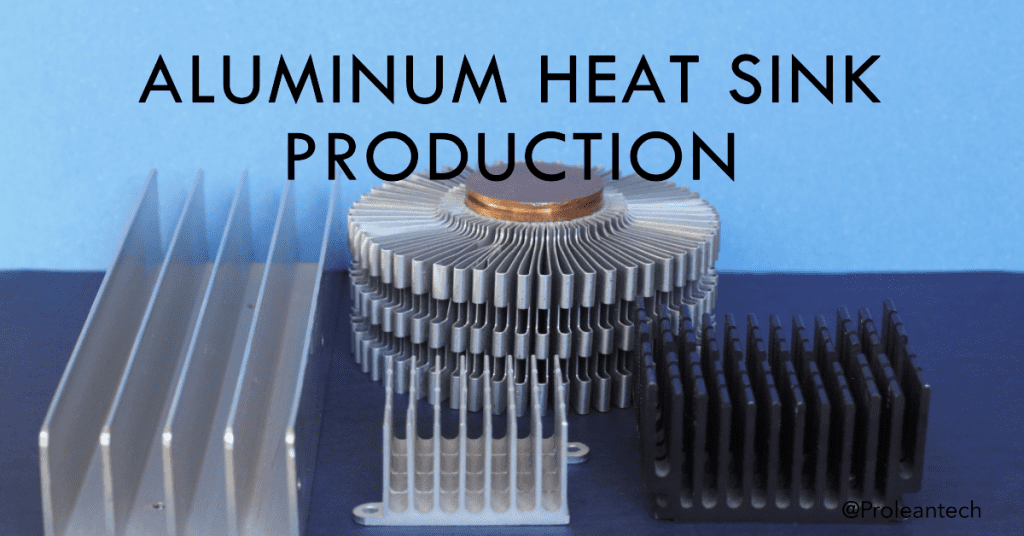
Aluminum heat sinks are a critical component in various electronic devices and systems, as they are designed to absorb and dissipate heat generated by electronic components, such as integrated circuits and transistors. They consist of aluminum material, known for its excellent thermal conductivity and lightweight and corrosion-resistant properties. By using aluminum heat sinks, manufacturers can prevent overheating, ensure optimal performance, and prolong electronic device lifespan.
This article will discuss the importance of heat sinks in electronics, the heat sink manufacturing process, the role of advanced CNC machining in heat sink production, the selection of suitable heatsink suppliers, and the future trends in aluminum heat sink production. It will also answer frequently asked questions about aluminum heat sinks.
The Importance of Heat Sinks in Electronics
Heat sinks play a crucial role in maintaining the performance and longevity of electronic devices. Electronic components generate heat during operation, and if not adequately dissipated, the heat can cause malfunction, degrade performance, or even lead to permanent damage. Heat sinks are specifically designed to absorb and dissipate the heat generated by these components, ensuring that the devices operate within their safe temperature range.
The effectiveness of a heat sink depends on several factors, including the material used, the surface area available for heat transfer, and the design of the heat sink. Aluminum is a popular choice for heat sinks due to its high thermal conductivity, which allows for efficient heat dissipation. Additionally, aluminum heat sinks are lightweight and corrosion-resistant, making them suitable for various applications, such as computers, LED lighting, and power supplies.
As electronic devices continue to become more compact and powerful, the need for efficient and reliable heat sinks is more critical than ever. In response to this demand, heat sink manufacturers are continually striving to develop innovative designs and production techniques to improve the performance and efficiency of their products.
Understanding the Heat Sink Manufacturing Process
The heat sink manufacturing process involves several steps, including material selection, design, fabrication, and finishing. Each of these steps is critical to the overall performance and quality of the final product.
Step1: Material selection
The first step in the manufacturing process is choosing the right material for the heat sink. As mentioned previously, aluminum is a popular choice due to its excellent thermal conductivity, lightweight, and corrosion-resistant properties. Other materials, such as copper and graphite, may also be used depending on the specific requirements of the application.
Step2: Design or 3D modelling
The design of a heat sink is critical to its performance, as it determines the surface area available for heat transfer and the overall efficiency of the heat sink. Engineers use advanced computer-aided design (CAD) software to create detailed 3D models of heat sinks, taking into consideration factors such as thermal resistance, airflow, and device constraints.
Step3: Fabrication
Once the design is finalized, the heat sink is fabricated using various techniques, such as extrusion, die casting, forging, or CNC machining. Each of these methods has its advantages and limitations, and the choice of technique depends on factors such as the complexity of the design, the required tolerances, and the production volume.
Step4: Finishing
After fabrication, the heat sink undergoes various finishing processes to improve its appearance and performance. These may include heat sink anodizing, powder coating, or electroplating, which can enhance the heat sink’s thermal conductivity, corrosion resistance, and aesthetic appeal.
How Heat Sinks are Made Using CNC Techniques?
To make aluminum heat sinks using CNC techniques, the process starts by preparing the raw material, which is loaded onto a CNC machine where a computer-controlled cutting tool removes material based on design specs. Common CNC machining processes include milling, turning, and drilling, with various tools and techniques used to achieve the desired result.
- Preparation of raw material: The process of making aluminum heat sinks using CNC techniques begins with the preparation of the raw material, which is typically in the form of a solid aluminum billet or an extruded profile.
- Loading the material onto the CNC machine: The material is then loaded onto the CNC machine, where a computer-controlled cutting tool is used to remove material from the workpiece according to the design specifications.
- CNC machining processes: CNC machining processes that are commonly used in heat sink production include milling, turning, and drilling. Milling involves the use of a rotating cutting tool to remove material from the workpiece and create the desired shape. Turning involves rotating the workpiece while a stationary cutting tool removes material, and drilling involves the use of a rotating drill bit to create holes in the workpiece.
- Cutting tools and techniques: Throughout the CNC machining process, various cutting tools and techniques may be employed to achieve the desired result. For example, multi-axis CNC machines can move in multiple directions simultaneously, allowing for more complex geometries and faster production times.
- Additional finishing processes: Once the machining process is complete, the cnc machined heat sink may undergo additional finishing processes, such as anodizing or powder coating, to enhance its performance and appearance.
Try Prolean Now!
The Role of Advanced CNC Machining in Heat Sink Production
Advanced CNC machining techniques play a critical role in the production of high-quality aluminum heat sinks. CNC machining is a computer-aided manufacturing process in which a computer-controlled machine tool is used to remove material from a workpiece, creating a desired shape with high precision and accuracy.
CNC machining offers several advantages in heat sink production, including:
- Enhanced design flexibility: CNC machining allows for the production of complex geometries and intricate designs that may be difficult or impossible to achieve using traditional manufacturing techniques. This enables engineers to create heat sinks with optimized performance and efficiency.
- Improved precision and accuracy: CNC machines are capable of achieving tight tolerances and high levels of repeatability, ensuring that every heat sink produced meets the exact specifications of the design.
- Increased production efficiency: CNC machining can significantly reduce production time by automating many of the steps involved in the manufacturing process. This allows for faster turnaround times and lower production costs.
- Greater material utilization: CNC machining offers high material utilization rates, as the machines can remove the material with minimal waste. This not only reduces material costs but also contributes to a more sustainable manufacturing process.
Custom Aluminum Heat Sink Design and Production
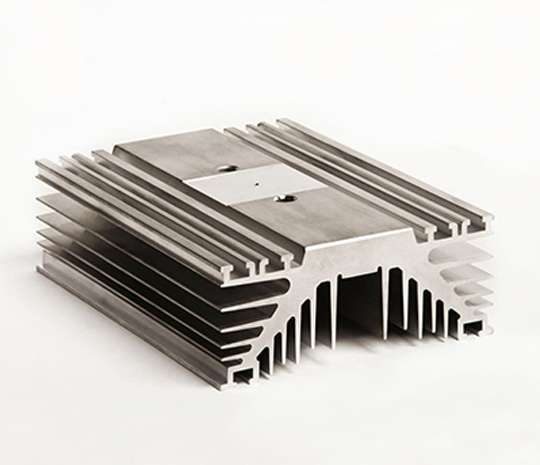
Aluminum heat sink part
Custom aluminum heat sinks are often required for specific applications, such as high-power LED lighting, power electronics, and telecommunications. Custom heat sinks can provide optimized thermal performance, reduced size and weight, and improved aesthetics.
To design and produce custom aluminum heat sinks, heat sink manufacturers typically follow a four-step process:
- Consultation: The first step is to consult with the client to understand their specific requirements, such as thermal performance, size, and shape.
- Design: The heat sink manufacturer then uses advanced CAD software to design a heat sink that meets the client’s requirements.
- Prototyping: Once the design is finalized, the heat sink manufacturer produces a prototype using advanced CNC machining techniques.
- Production: If the prototype meets the client’s requirements, the heat sink manufacturer begins production of the final product using the same CNC machining techniques.
Custom aluminum heat sink design and production require specialized knowledge and expertise in heat sink manufacturing and CNC machining. It is essential to choose a supplier with a proven track record in custom heat sink production and the ability to provide tailored solutions that meet your specific requirements.
Related to:
- Top 9 CNC Machining Manufacturers in The World
- CNC Precision Machining Explained: Benefits & Practical Uses
Get your customized Aluminum Heat-sink from ProleanTech
Choosing the right heatsink supplier or manufacturer is essential to ensuring that you receive a high-quality product that meets your specific requirements. By following strict quality control processes and adhering to industry standards, heat sink manufacturers can ensure that their products meet the highest performance and quality standards.
At ProleanTech, we specialize in providing high-quality CNC machining services for aluminum heat sink production. With our state-of-the-art equipment and technology, we can produce custom-designed heat sinks with complex geometries and tight tolerances. Our team of experienced engineers and technicians works closely with clients to understand their specific requirements and provide tailored solutions that meet their needs. We adhere to strict quality control processes and industry standards to ensure that our products meet the highest performance and quality standards.
Whether you require a custom-designed heat sink for a specific application or a high-volume production run, ProleanTech can provide the Aluminum machining service you need. Contact us today to learn more about our services and how we can help you achieve your thermal management goals.
Conclusion
Aluminum heat sinks play a critical role in ensuring the optimal performance and longevity of electronic devices and systems. The heat sink manufacturing process has evolved to incorporate advanced CNC aluminum machining techniques, enabling manufacturers to produce high-quality heat sinks with complex geometries and tight tolerances.
In the future, we can expect to see further advancements in heat sink manufacturing, such as the use of additive manufacturing techniques, the development of new materials, and the integration of IoT technology for real-time monitoring and optimization.
FAQs
1. What is the purpose of a heat sink in electronics?
A heat sink is designed to absorb and dissipate the heat generated by electronic components, such as integrated circuits and transistors, ensuring that the devices operate within their safe temperature range and preventing malfunction, degraded performance, or permanent damage.
2. What materials are commonly used in heat sink manufacturing?
Aluminum, copper, and graphite are commonly used in heat sink manufacturing, depending on the specific requirements of the application.
3. What is CNC machining, and how is it used in heat sink production?
CNC machining is a computer-aided manufacturing process in which a computer-controlled machine tool is used to remove material from a workpiece, creating a desired shape with high precision and accuracy. CNC machining is used in heat sink production to create complex geometries and tight tolerances, improving the performance and efficiency of the heat sink.
4. What factors should be considered when selecting a heatsink supplier or manufacturer?
Factors to consider when selecting a heatsink supplier or manufacturer include their experience and expertise, quality control and standards, customization capabilities, production capacity and lead times, and communication and customer service.

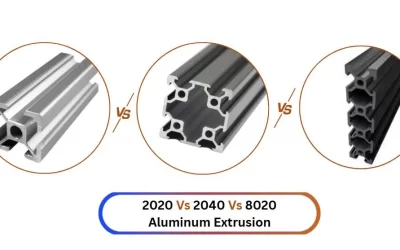
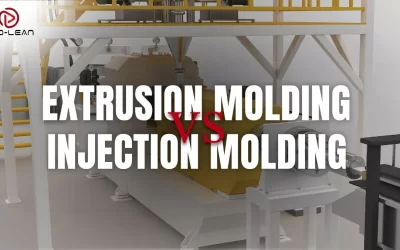
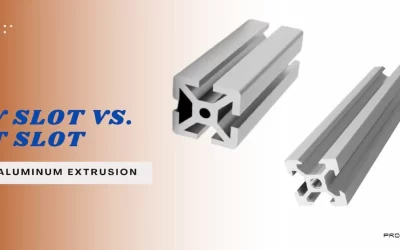
0 Comments